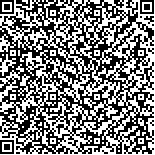孙志成,王彤,顾晓美,等.虚拟现实训练联合芳香疗法对养老院阿尔茨海默病患者的影响[J].中华物理医学与康复杂志,2023,45(3):226-231
扫码阅读全文

|
| 虚拟现实训练联合芳香疗法对养老院阿尔茨海默病患者的影响 |
|
| |
| DOI:10.3760/cma.j.issn.0254-1424.2023.03.007 |
| 中文关键词: 虚拟现实训练 芳香疗法 养老院 阿尔茨海默病 医养结合 |
| 英文关键词: Virtual reality training Aromatherapy Nursing homes Alzheimer′s disease |
| 基金项目:江苏省卫生健康委医学科研项目(Z2021080);国家重点研发计划资助项目(2018YFC2001600,2018YFC2001603);江苏省老年医学学会2019年度老年医学科技发展基金(医养结合)专项项目(JGS2019ZXYY03) |
|
| 摘要点击次数: 4160 |
| 全文下载次数: 5108 |
| 中文摘要: |
| 目的 探讨虚拟现实(VR)训练联合芳香疗法对养老院阿尔茨海默病(AD)患者的康复效果。 方法 选取养老院AD患者50例,按随机数字表法分为观察组和对照组,每组患者25例。2组患者均给予常规康复干预,观察组在此基础上增加VR训练同步芳香疗法,VR训练和芳香疗法均每周3次,每次45 min,连续干预6个月。于干预前和干预6个月后(干预后)评估2组患者的认知功能[ MMSE和AD认知功能评估量表(ADAS-cog)]、精神行为症状[AD病理行为评定量表(BEHAVE-AD)]、日常生活活动(ADL)能力(日常生活活动能力评估量表)、运动功能[包括“起立-行走”记时测试(TUGT)、30 s坐椅站立试验(30sCST)、30 s手臂弯曲试验(30sACT)和坐椅前伸试验(CSRT)]和生活质量[老年性痴呆生活质量量表(QOL-AD)]评估。 结果 干预后,对照组患者的MMSE、ADAS-cog和ADL评分与组内干预前比较,均显著改善,差异均有统计学意义(P<0.05);观察组患者的MMSE、ADAS-cog、BEHAVE-AD和ADL评分与组内干预前比较,亦显著改善(P<0.05),且均优于对照组干预后,差异均有统计学意义(P<0.05)。干预后,2组患者的TUGT、30sCST、30sACT和CSRT测试结果与组内干预前比较,均显著改善,差异均有统计学意义(P<0.05),且观察组干预后的上述指标亦优于对照组干预后,差异均有统计学意义(P<0.05)。干预后,对照组的QOL-AD评分为(26.28±3.27)分,与组内干预前比较,差异有统计学意义(P<0.05);观察组的QOL-AD评分为(29.47±4.16)分,与组内干预前和对照组干预后比较,差异均有统计学意义(P<0.05)。 结论 VR训练联合芳香疗法可显著改善养老院AD患者的认知功能、精神行为症状、日常生活活动能力、运动功能和生活质量,值得在养老机构的AD患者中推广和应用。 |
| 英文摘要: |
| Objective To explore any effects of combining virtual reality training with aromatherapy in caring for Alzheimer′s disease patients in a nursing home. Methods Fifty nursing home residents with Alzheimer′s were divided at random into an observation group and a control group, each of 25. Both groups received routine rehabilitation, while the observation group was additionally given 45 minutes of virtual reality training combined with aromatherapy, 3 times a week for 6 months. Both groups′ cognition was then evaluated using the MMSE and an Alzheimer′s cognition assessment scale (ADAS-cog). Psycho-behavioral symptoms were quantified using the Alzheimer′s disease pathological behavior scale (BEHAVE-AD). Motor functioning was quantified using the timed up and go test (TUGT), the 30-second sit-to-stand test (30sCST), the 30-second arm curl test (30sACT) and the sit-and-reach test (CSRT). Ability in the activities of daily living (ADL) and life quality were quantified using the activity of daily living scale and of the quality of life scale for Alzheimer′s disease (QOL-AD) before and after the intervention. Results After the intervention the average MMSE, ADAS-cog, BEHAVE-AD and ADL scores of both groups had improved significantly, with the average improvement in the observation group significantly greater than that in the control group. The TUGT, 30sCST, 30sACT and CSRT results of both groups were also significantly better, with those of the observation group again significantly superior, on average, to the control group′s results. The average QOL-AD score in the observation was significantly improved after the intervention, and was then significantly better than the control group′s average. Conclusions Virtual reality training combined with aromatherapy can significantly improve the cognition, psycho-behavioral symptoms, activity in daily living, motor functioning and life quality of Alzheimer′s patients in a nursing home. It is worthy of promotion and application in nursing homes. |
|
查看全文
查看/发表评论 下载PDF阅读器 |
| 关闭 |
|
|
|